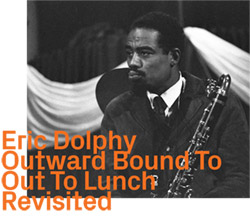
Arriving in NY in 1959, saxophonist, flute & bass clarinetist Eric Dolphy joined some of the finest avant jazz players, releasing his 1st album as a leader in 1960--Outward Bound--with Freddie Hubbard, Jaki Byard, George Tucker & Roy Haynes; subsequently tagged as an anti-jazz musician, it would be 4 years before his masterwork Out To Lunch would be released, both albums here reissued & remastered.
In Stock
Quantity in Basket: None
Log In to use our Wish List
Shipping Weight: 3.00 units
EU & UK Customers:
Discogs.com can handle your VAT payments
So please order through Discogs
Sample The Album:
Eric Dolphy-alto saxophone, flute, bass clarinet
Freddie Hubbard-trumpet
Jaki Byard-piano
George Tucker-double bass
Roy Haynes-drums
Bobby Hutcherson-vibraphone
Richard Davis-double bass
Tony Williams-drums
Click an artist name above to see in-stock items for that artist.
UPC: 752156114321
Label: ezz-thetics by Hat Hut Records Ltd
Catalog ID: ezz-thetics 1143
Squidco Product Code: 33073
Format: CD
Condition: New
Released: 2023
Country: Switzerland
Packaging: Cardboard Gatefold
Track 1-6 recorded at Van Gelder Studios, in Englewood Cliffs, New Jersey, on April 1st, 1960.
Tracks 7-11 recorded at Van Gelder Studios, in Englewood Cliffs, New Jersey, on February 25th, 1964.
Outward Bound originally released in 1960 as a vinyl LP on the New Jazz label with catalog code 8236. Out To Lunch originally issued in 1964 as a vinyl LP on the Blue Note label with catalog code BLP 4163.
"Eric Dolphy is so closely associated with the New York avant-garde of the early 1960s that his formative years in Los Angeles are discounted, if not overlooked. Dolphy brought a wealth of experience with him when he relocated in late 1959. In the legendary garage his father converted into a practice room for the prodigious teenager, Dolphy hosted Clifford Brown, Max Roach, and others, and woodshedded with Buddy Collette and Harold Land. He then spent a decade in the bands of Roy Porter (drummer on Charlie Parker's Dial sessions), Gerald Wilson, and Chico Hamilton, playing everything from straight-up bebop, high-octane big band charts, and proto-chamber jazz. While he did not play with Ornette Coleman, Dolphy knew him in the mid-1950s and heard his original music at its embryonic stage. Dolphy also befriended and aided John Coltrane when he was stranded in LA in 1954.
Upon his arrival in New York, Dolphy almost immediately began playing with another Los Angeles colleague, Charles Mingus, who held forth at the Showplace in Greenwich Village from December through most of 1960. It was probably there that Dolphy was heard by Ira Gitler, who lobbied Prestige to give him a date. By the time the session had been scheduled for April 1, Dolphy had moved into Slide Hampton's brownstone at 245 Carleton Avenue in Brooklyn, the site for the rehearsals for Outward Bound. Freddie Hubbard also lived there, as did Charles Majid Greenlee, who composed "Miss Toni," and cover artist Richard "Prophet" Jennings, who became the dedicatee of "The Prophet," first recorded during Dolphy and Booker Little's historic Five Spot stand.
Rehearsing at Hampton's contributed to Dolphy's quintet sounding more like a working band than an ad hoc group. A lot could have gone wrong. Hubbard later referenced the difficulties of Dolphy's unusually structured compositions. There were also the contrasting sensibilities within the group: the recently emerged trumpeter exuded swagger and explosive power; Jaki Byard was a mercurial pan-stylist (which later made him the perfect pianist for Mingus); while Roy Haynes and George Tucker were steadfast and polished. However, Dolphy catalyzed this potentially unstable chemistry in a diverse program of originals and chestnuts, with the quintet nailing close-order ensembles and taking bold solos.
Dolphy's Los Angeles roots are reflected in "G.W." and "Les," respective dedications to Wilson and trombonist Lester Robertson, who played in the envelope-pushing band Dolphy led at The Oasis in '58 - he later joined the Pan Afrikan Peoples Arkestra. Both compositions countered the then prevailing cool white narrative of West Coast jazz, as Dolphy compacted angular materials into irregular forms that promoted a palpably urgent swing, exemplified by the exchanges between the horns on "Les." The influence of living at Hampton's is evidenced by the laid-back blues of "245" and the convivial "Miss Toni" (which Greenlee brought to Archie Shepp's mid-1970s quintet). Rounded out by a lithe "On Green Dolphin Street," a fine example of the lyricism Dolphy coaxed from the bass clarinet, and two flute features - a melancholy "Glad to Be Unhappy" and "April Fool," a nimbly swinging blues - Outward Bound is an album that is alternately warm and fiery.
Outward Bound was the first of several iconic recordings Dolphy contributed to in 1960, including Charles Mingus Presents Charles Mingus, Jazz Abstractions, a primary document of the Third Stream, and Ornette Coleman's Free Jazz. The latter two were recorded in a two-day period in addition to Dolphy's Far Cry, his first with Booker Little. Dolphy would experience similar concentrated periods that yielded enduring recordings in 1961. Between early May and early June, Dolphy played on George Russell's Ezz-thetics, and began what became a notorious collaboration with John Coltrane, joining the saxophonist's front line for Olé and writing charts for Africa/Brass. In mid-July to early August, Dolphy's quintet with Little made their historic stand at The Five Spot, followed by the making of Max Roach's Percussion Bitter Sweet.
Dolphy's extensive touring with Coltrane and the release of Coltrane at the Village Vanguard prompted virulent criticism beginning in late 1961 that culminated in a series of articles branding them "anti-jazz." While Coltrane and Dolphy acquitted themselves in an April 1962 Down Beat interview, the controversy arguably had a significant impact on Dolphy's career. Apart from Conversations, the 1963 album for the obscure FM imprint - the last issued in his lifetime - Dolphy would not get another date for a leading US jazz label until Out to Lunch in February 1964.
In his comprehensive 1966 Jazz Monthly article, "Eric Dolphy," Jack Cooke reported that the advance buzz about the Blue Note recording signaled a possible "new upward trend in Dolphy's recording career." This notion is supported by the substitution of Blue Note regular Hubbard and teenage phenom Anthony Williams for Woody Shaw and J.C. Moses of the Conversations quintet - by then, members Bobby Hutcherson and Richard Davis, with whom Dolphy had recorded the enduring duet version of "Alone Together," were also recording for the label.
The album also benefited from Blue Note's knack for sequencing tracks into two flowing, complementary sides, which explains the album opening with the Monk-inspired "Hat and Beard," even though its jaunty mood was quickly atomized by Dolphy's squalling bass clarinet solo. Despite deeply shaded duet passages for bass clarinet and bass, "Something Sweet, Something Tender" approximated the hinge-like ballads that were a perennial feature on Blue Note A sides. Given its dedicatee - the flutist renowned for recording works like Varèse's "Density 21.5," which Dolphy performed at the Ojai Festival in 1962 - "Gazzelloni" is surprisingly boppish, ending the side with exuberant energy.
A presumably unintended consequence of the sequencing is that Dolphy's bass clarinet and flute were front-loaded on the A side, while his alto saxophone was relegated to the B side, where Blue Note also tended to place a session's longer performances. Cooke contended that the title piece and "Straight Up and Down" made the case that Dolphy could no longer be considered a transitional figure, that the harmonic freedom and rhythmic displacements of his music essentially placed him in a new context. This necessitated new approaches to interactivity within the ensemble, where lead and support roles merge and mingle. Dolphy had the right colleagues for this endeavor, as they constantly enhanced the music by communing in this middle ground.
The winding path between Outward Bound and Out to Lunch is easily explained, given the exigencies of a freelance musician blazing trails few were ready or equipped to follow. This is what led him to his fateful trip to Europe two months after making Out to Lunch. Had he returned after his projected one-year stay, married to Joyce Mordecai, Dolphy may well have picked up where he left off. But we will never know."-Bill Shoemaker, December 31, 2022
Artist Biographies
• Show Bio for Eric Dolphy "Eric Allan Dolphy Jr. (June 20, 1928 - June 29, 1964) was an American jazz alto saxophonist, bass clarinetist and flautist. On a few occasions, he also played the clarinet and piccolo. Dolphy was one of several multi-instrumentalists to gain prominence in the same era. His use of the bass clarinet helped to establish the instrument within jazz. Dolphy extended the vocabulary and boundaries of the alto saxophone, and was among the earliest significant jazz flute soloists. His improvisational style was characterized by the use of wide intervals, in addition to employing an array of extended techniques to emulate the sounds of human voices and animals. He used melodic lines that were "angular, zigzagging from interval to interval, taking hairpin turns at unexpected junctures, making dramatic leaps from the lower to the upper register." Although Dolphy's work is sometimes classified as free jazz, his compositions and solos were often rooted in conventional (if highly abstracted) tonal bebop harmony." ^ Hide Bio for Eric Dolphy • Show Bio for Freddie Hubbard "One of the greatest trumpet virtuosos ever to play in the jazz idiom, and arguably one of the most influential, Freddie Hubbard played mellophone and then trumpet in his school band and studied at the Jordan Conservatory with the principal trumpeter of the Indianapolis Symphony Orchestra. As a teenager, he worked with Wes and Monk Montgomery and eventually founded his own band, the Jazz Contemporaries, with bassist Larry Ridley and saxophonist James Spaulding. After moving to New York in 1958, he quickly astonished fans and critics alike with his depth and maturity, playing with veteran artists Philly Joe Jones, Sonny Rollins, Slide Hampton, J.J. Johnson, Eric Dolphy, and Quincy Jones, with whom he toured Europe. In June 1960, on the recommendation of Miles Davis, he recorded his first solo album, Open Sesame, for Blue Note Records, just weeks after his 22nd birthday. Within the next 10 months, he recorded two more albums, Goin' Up and Hub Cap, and then in August 1961 made what many consider to be his masterpiece, Ready for Freddie, which was also his first Blue Note collaboration with Wayne Shorter. That same year, Hubbard joined Art Blakey's Jazz Messengers, replacing Lee Morgan. By now, he had indisputably developed his own sound and had won the DownBeat "New Star" award on trumpet. Hubbard remained with the Jazz Messengers until 1964, when he left to form his own small group, which over the next years featured Kenny Barron and Louis Hayes. Throughout the 1960s, Hubbard also played in bands led by other legends, including Max Roach, and was a significant presence on the Blue Note recordings of Herbie Hancock, Wayne Shorter and Hank Mobley. Hubbard was also featured on four classic, groundbreaking 1960s sessions: Ornette Coleman's Free Jazz, Oliver Nelson's Blues and the Abstract Truth, Eric Dolphy's Out to Lunch, and John Coltrane's Ascension. In the 1970s, Hubbard achieved his greatest popular success with a series of crossover albums on Atlantic and CTI Records, including the Grammy Award-winning First Light. He returned to acoustic hard bop in 1977 when he toured with the V.S.O.P. quintet, which teamed him with the members of Miles Davis' 1960s ensemble: Wayne Shorter, Herbie Hancock, Ron Carter, and Tony Williams. In the 1980s, Hubbard again led his own groups, often in the company of Joe Henderson, and he collaborated with fellow trumpet legend Woody Shaw on a series of albums for the Blue Note and Timeless labels." ^ Hide Bio for Freddie Hubbard • Show Bio for Jaki Byard "John Arthur "Jaki" Byard, June 15, 1922 - February 11, 1999, was an American jazz multi-instrumentalist, composer, and arranger. Mainly a pianist, he also played tenor and alto saxophones, among several other instruments. He was known for his eclectic style, incorporating everything from ragtime and stride to free jazz. Byard played with trumpeter Maynard Ferguson in the late 1950s and early 1960s, and was a member of bands led by bassist Charles Mingus for several years, including on several studio and concert recordings. The first of his recordings as a leader was in 1960, but, despite being praised by critics, his albums and performances did not gain him much wider attention. In his 60-year career, Byard recorded at least 35 albums as leader, and more than 50 as a sideman. Byard's influence on the music comes from his combining of musical styles during performance, and his parallel career in teaching. From 1969 Byard was heavily involved in jazz education: he began teaching at the New England Conservatory of Music and went on to work at several other music institutions, as well as having private students. He continued performing and recording, mainly in solo and small group settings, but he also led two big bands - one made up of some of his students, and the other of professional musicians. His death, from a single gunshot while in his home, remains an unsolved mystery." ^ Hide Bio for Jaki Byard • Show Bio for George Tucker "George Andrew Tucker (December 10, 1927, in Palatka, Florida Ð October 10, 1965, in New York City) was an American jazz double-bassist. Tucker studied bass at the New York Conservatory of Modern Music in the late 1940s. Early in his career, he played with Earl Bostic, John Coltrane, and Jackie McLean. He worked in the house bands of several lauded New York jazz venues, such as the Continental Lounge, The Playhouse, and Minton's; he played with Eric Dolphy, Clifford Jordan, Horace Parlan, Booker Ervin, Jerome Richardson, and Junior Mance during this time. In 1958, he recorded with Melba Liston on her jazz classic, Melba Liston and Her 'Bones. In 1960Ð61 he recorded with Stanley Turrentine, Parlan, Ervin, Dexter Gordon, and Shirley Scott, and in 1962Ð63 he toured with the trio of Dave Lambert, John Hendricks and Yolande Bavan. Near the end of his life Tucker recorded with Coleman Hawkins and Jaki Byard. George Tucker died from a cerebral hemorrhage while performing with guitarist Kenny Burrell." ^ Hide Bio for George Tucker • Show Bio for Roy Haynes "Roy Owen Haynes (born March 13, 1925) is an American jazz drummer. He is among the most recorded drummers in jazz. In a career lasting over 75 years he has played swing, bebop, jazz fusion, avant-garde jazz and is considered the father of modern jazz drumming. "Snap Crackle" was a nickname given to him in the 1950s. He has led bands such as the Hip Ensemble. His albums Fountain of Youth and Whereas were nominated for a Grammy Award. He was inducted into the Modern Drummer Hall of Fame in 1999. His son Graham Haynes is a cornetist; his son Craig Holiday Haynes and grandson Marcus Gilmore are both drummers. " ^ Hide Bio for Roy Haynes • Show Bio for Bobby Hutcherson "Bobby Hutcherson was born January 27, 1941, in Los Angeles. He studied piano with his aunt as a child, but didn't enjoy the formality of the training; still, he tinkered with it on his own, especially since his family was already connected to jazz: his brother was a high school friend of Dexter Gordon and his sister was a singer who later dated Eric Dolphy. Everything clicked for Hutcherson during his teen years when he heard a Milt Jackson record; he worked until he saved up enough money to buy his own set of vibes. He began studying with Dave Pike and playing local dances in a group led by his friend, bassist Herbie Lewis. After high school, Hutcherson parlayed his growing local reputation into gigs with Curtis Amy and Charles Lloyd and in 1960, he joined an ensemble co-led by Al Grey and Billy Mitchell. In 1961, the group was booked at New York's legendary Birdland club and Hutcherson wound up staying on the East Coast after word about his inventive four-mallet playing started to spread. Hutcherson was invited to jam with some of the best up-and-coming musicians in New York: hard boppers like Grant Green, Hank Mobley, and Herbie Hancock, but most importantly, forward-thinking experimentalists like Jackie McLean, Grachan Moncur III, Archie Shepp, Andrew Hill, and Eric Dolphy. Through those contacts, Hutcherson became an in-demand sideman at recording sessions, chiefly for Blue Note. Hutcherson had a coming-out party of sorts on McLean's seminal "new thing" classic One Step Beyond (1963), providing an unorthodox harmonic foundation in the piano-less quintet. His subsequent work with Dolphy was even more groundbreaking and his free-ringing, open chords and harmonically advanced solos were an important part of Dolphy's 1964 masterwork Out to Lunch. That year, he won the DownBeat readers' poll as Most Deserving of Wider Recognition on his instrument. Hutcherson's first shot as a leader came with 1965's Dialogue, a classic of modernist post-bop with a sextet featuring some of the hottest young talent on the scene - most notably Freddie Hubbard, Sam Rivers, and Andrew Hill, although drummer Joe Chambers would go on to become a fixture on Hutcherson's '60s records (and often contributed some of the freest pieces he recorded). A series of generally excellent sessions followed over the next few years, highlighted by 1965's classic Components (which showcased both the free and straight-ahead sides of Hutcherson's playing) and 1966's Stick-Up! In 1967, he returned to Los Angeles and started a quintet co-led by tenor saxophonist Harold Land, which made its recording debut the following year on Total Eclipse. Several more sessions followed (Spiral, Medina, Now) that positioned the quintet about halfway in between free bop and mainstream hard bop - advanced territory, but not entirely fashionable at the time. Thus, the group didn't really receive its due and dissolved in 1971. By that point, Hutcherson was beginning a brief flirtation with mainstream fusion, which produced 1970s funky but still sophisticated San Francisco (named after his new base of operations). By 1973, however, he'd abandoned that direction, returning to modal bop and forming a new quintet with trumpeter Woody Shaw that played at that summer's Montreux Jazz Festival (documented on Live at Montreux). In 1974, he re-teamed with Land and over the next few years, he continued to record cerebral bop dates for Blue Note despite being out of step with the label's more commercial direction. He finally departed in 1977 and signed with Columbia, where he recorded three albums from 1978-1979 (highlighted by Un Poco Loco). Adding the marimba to his repertoire, Hutcherson remained active throughout the '80s as both a sideman and leader, recording most often for Landmark in a modern-mainstream bop mode. He spent much of the '90s touring rather than leading sessions; in 1993, he teamed with McCoy Tyner for the duet album Manhattan Moods. Toward the end of the decade, Hutcherson signed on with Verve, for whom he debuted in 1999 with the well-received Skyline. In 2004, Hutcherson joined the San Francisco Jazz Collective, touring with the ensemble for several years. In 2007, he released the album For Sentimental Reasons, which featured pianist Renee Rosnes. Two years later, Hutcherson returned with the John Coltrane-inspired Wise One. The concert album, Somewhere in the Night, recorded at Dizzy's Club Coca-Cola at Lincoln Center, appeared in 2012. In 2014, Hutcherson joined organist Joey DeFrancesco and saxophonist David Sanborn for the Blue Note session Enjoy the View."-Steve Huey ^ Hide Bio for Bobby Hutcherson • Show Bio for Richard Davis "Richard Davis is an international performing musician and Professor of Bass (European Classicaland Jazz), Jazz History and combo improvisation at the University of Wisconsin-Madison. Chicagoborn, he came to the UW-Madison in 1977 after spending 23 years in New York City establishinghimself as one of the world's premier bass players. Downbeat International Critics Poll named himBest Bassist from 1967-74. He has recorded a dozen albums as a leader and 3000 recordings andjingles as a sideman. His performance/recording credits include Sarah Vaughan, Eric Dolphy, DonSebesky, Oliver Nelson, Bruce Springsteen, Van Morrison, Frank Sinatra, Barbra Streisand, MilesDavis, Thad Jones/Mel Lewis Band, Dexter Gordon, Ahmad Jamal and a host of other notables.Mr. Davis is equally at home in the world of euro classical music, having played under the batons ofGeorge Szell, Leopold Stokowski, Igor Stravinsky, Pierre Boulez, Gunther Schuller, and LeonardBernstein. His great versatility as a bassist keeps him in constant demand for worldwide concertappearances. For nearly fifty years he has drawn enthusiastic audiences in Japan, Europe, Russia,South America, Puerto Rico, Cuba, The West Indies, Hong Kong , Israel and United States. His mostrecent CD release (May 2000) , The Bassists: Homage to Diversity (King Records) was recorded inJapan. This CD was inspired by experiences related to diversity dialogue. His second CD with King records So In Love was assembled with the idea of embracing the oneness of humankind. In 1993, he founded the Richard Davis Foundation for Young Bassists, Inc. which annually brings in 17 masterful bass instructors/performers to teach young bassists ages 3-18.In 1998 he created the Retention Action Project (R.A.P.) focused on open dialogues in subjects that educate all of us to multicultural differences. R.A.P. collaborated with Vice Chancellor Paul W. Barrows (student affairs) and Seema Kapani, Diversity Education Coordinator/Trainer (Equity and Diversity Resourse Center).He has been instrumental in bringing to the UW campus renowned speakers and social change activists such as Peggy McIntosh, Jane Elliott, Francie Kendall, Nathan Rutstein, Victor Lewis, Hugh Vasquez (Color of Fear, Stir Fry Productions,1994) and Allan G. Johnson (Gender Knot). Prof. Davis is devoted to equity issues and shares freely his wisdom, home, and resources with one and all to help create an environment where all can experience dignity and peace. He has also initiated a chapter in Madison of the "Institutes for the Healing of Racism, Inc." Prof. Davis has received honorary doctorate degrees in Musical Arts and Humane Letters, and the Hilldale Award for distinguished teaching from former Chancellor Donna Shalala, and a honorary doctorate of Humane Letters from Edgewood College, Madison, in 1998. In 2000 he received the Manfred E. Swarsensky Humanitarian Award from the Rotary Club Of Madison. In 2001 he received the Governor's of Wisconsin Arts Award. The Reverend Dr. Martin Luther King, Jr. Humanitarian Award, bestowed annually by the City of Madison, was presented to Dr. Richard Davis by Mayor Susan J.M. Bauman during the 18th Annual City-County Observance of Dr. King's birth at the Madison Civic Center, on Monday, January, 2003. (Interview) In 2008, Richard Davis received the MAMA (Madison Area Music Award Michael St. John Lifetime Achievement Award, Human Rights Award (Rev.James C. Wright), "FIGS" 2008 First Interest Group Students (Freshman Year), the TRIO award/first in family to go to College/Awarded by Caroline McCormack. In 2009 he received the Exceptional Service Award University of Wisconsin-Madison 2009 (Gary Sandefur, Dean), and the Spencer Tracy Award for Distinction in the Performing Arts (Wisconsin Historical Society)." ^ Hide Bio for Richard Davis • Show Bio for Tony Williams "Anthony Tillmon Williams (December 12, 1945 Ð February 23, 1997) was an American jazz drummer. Williams first gained fame in the band of trumpeter Miles Davis and pioneered jazz fusion. He was inducted into the Modern Drummer Hall of Fame in 1986. During his lifetime, music critic Robert Christgau described Williams as "probably the best drummer in the world". Williams was born in Chicago and grew up in Boston. He was of African, Portuguese, and Chinese descent. He studied with drummer Alan Dawson at an early age, and began playing professionally at the age of 13 with saxophonist Sam Rivers. Saxophonist Jackie McLean hired Williams when he was 16. At 17 Williams gained attention by joining Miles Davis in what was later dubbed Davis's Second Great Quintet. Williams was a vital element of the group, called by Davis in his autobiography "the center that the group's sound revolved around." His playing helped redefine the role of the jazz rhythm section through the use of polyrhythms and metric modulation. Meanwhile, he recorded his first two albums as leader for Blue Note label, Life Time (1964) and Spring (1965). He also recorded as a sideman for the label including, in 1964, Out to Lunch! with Eric Dolphy and Point of Departure with Andrew Hill. In 1969, he formed a trio, the Tony Williams Lifetime, with John McLaughlin on guitar and Larry Young on organ. Lifetime was a pioneering band of the fusion movement. Their first album was Emergency!. After the departures of McLaughlin and bassist Jack Bruce, who had joined the group for its second album, and several more releases, Lifetime disbanded. In 1975, Williams put together a band he called "The New Tony Williams Lifetime", featuring bassist Tony Newton, pianist Alan Pasqua, and English guitarist Allan Holdsworth, which recorded two albums for Columbia Records, Believe It and Million Dollar Legs. In mid-1976, Williams was a part of a reunion with his colleagues from the Miles Davis band: keyboardist Herbie Hancock, bassist Ron Carter, and saxophonist Wayne Shorter. Davis was in the midst of a six-year hiatus and was "replaced" by Freddie Hubbard. The record was later released as V.S.O.P. The group toured and for several years and a series of live albums were released under the name "V.S.O.P." or "V.S.O.P.: The Quintet". In 1979, Williams, McLaughlin and bassist Jaco Pastorius united for a one-time performance at the Havana Jazz Festival. This trio came to be known as the Trio of Doom, and a recording of their performance (along with some studio tracks recorded in New York shortly thereafter) was released in 2007. It opens with a powerful drum improvisation by Williams, followed by McLaughlin's "Dark Prince" and Pastorius' "Continuum", Williams' original composition "Para Oriente" and McLaughlin's "Are You the One?" Williams and Pastorius had also played together on the Herbie Hancock track "Good Question" from his 1978 album Sunlight. With the group Fuse One, Williams released two albums in 1980 and 1982. In 1985, he returned to Blue Note and the result was a series of recordings for the label beginning with Foreign Intrigue, which featured the playing of pianist Mulgrew Miller and trumpeter Wallace Roney. Later that year he formed a quintet with Miller, Roney, saxophonist Bill Pierce, and bassist Charnett Moffett (later Ira Coleman). This band played Williams' compositions almost exclusively. Williams also played drums for the band Public Image Limited, fronted by John Lydon (a.k.a. Johnny Rotten of the Sex Pistols), on their release Album/Cassette/Compact Disc (1986, the album title varied depending on the format). He played on the songs "FFF", "Rise" (a modest hit), and "Home". Bass guitarist Bill Laswell co-wrote those three songs with Lydon. The other drummer on that album was Ginger Baker. Williams lived and taught in the San Francisco Bay Area until his death from a heart attack following routine gall bladder surgery. One of his final recordings was The Last Wave by the trio known as Arcana, a release organized by Bill Laswell." ^ Hide Bio for Tony Williams
7/1/2025
Have a better biography or biography source? Please Contact Us so that we can update this biography.
7/1/2025
Have a better biography or biography source? Please Contact Us so that we can update this biography.
7/1/2025
Have a better biography or biography source? Please Contact Us so that we can update this biography.
7/1/2025
Have a better biography or biography source? Please Contact Us so that we can update this biography.
7/1/2025
Have a better biography or biography source? Please Contact Us so that we can update this biography.
7/1/2025
Have a better biography or biography source? Please Contact Us so that we can update this biography.
7/1/2025
Have a better biography or biography source? Please Contact Us so that we can update this biography.
7/1/2025
Have a better biography or biography source? Please Contact Us so that we can update this biography.
Track Listing:
1. G.W. 7:59
2. Green Dolphin Street 5:46
3. Les 5:14
4. 245 6:51
5. Glad to Be Happy 5:29
6. Miss Toni 5:42
7. Hat and Beard 8:26
8. Something Sweet, Something Tender 6:05
9. Gazzelloni 7:23
10. Out to Lunch 12:08
11. Straight Up and Down 8:22
Hat Art
Improvised Music
Jazz
Free Improvisation
Quintet Recordings
Jazz Reissues
Staff Picks & Recommended Items
New in Improvised Music
Search for other titles on the label:
ezz-thetics by Hat Hut Records Ltd.


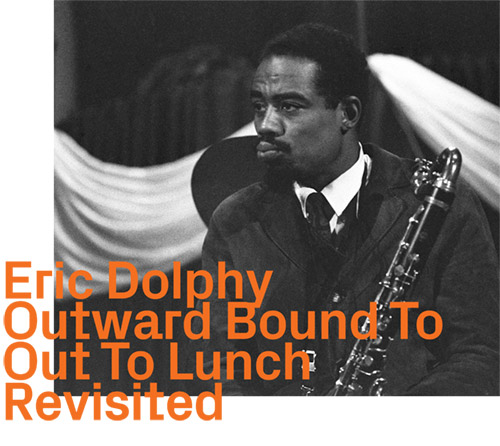


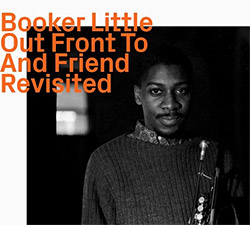
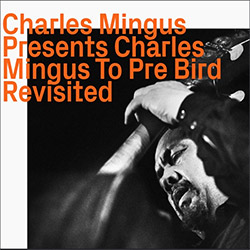
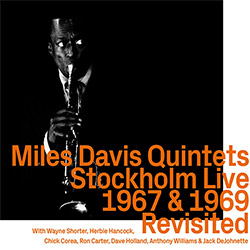
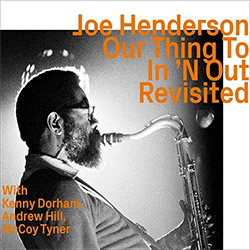

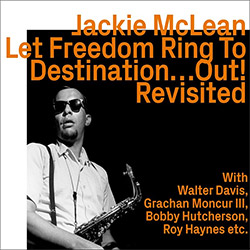


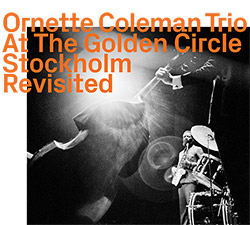
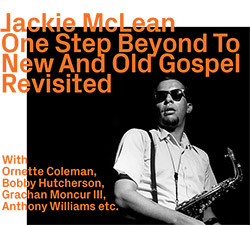
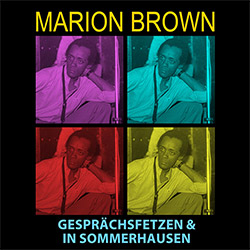


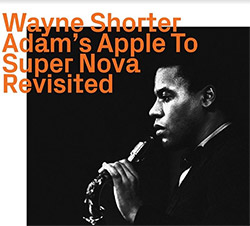

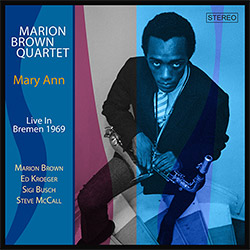
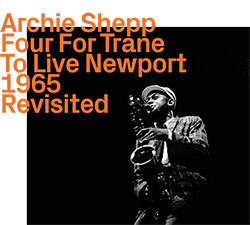
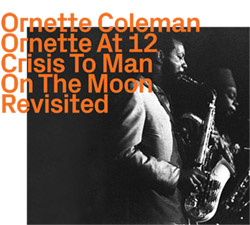

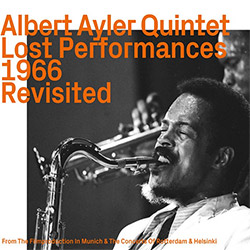



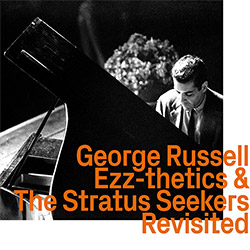










![Deupree, Jerome / Sylvie Courvoisier / Lester St. Louis / Joe Morris: Canyon [2 CDs]](https://www.teuthida.com/productImages/misc4/36404.jpg)


![Eternities: Rides Again [CASSETTE]](https://www.teuthida.com/productImages/misc4/36247.jpg)

![Lopez, Francisco: Untitled (2021-2022) [2 CDs]](https://www.teuthida.com/productImages/misc4/36438.jpg)




![Eventless Plot | Haarvol: The Subliminal Paths [CASSETTE + DOWNLOAD]](https://www.teuthida.com/productImages/misc4/36232.jpg)












![Eventless Plot | Francesco Covarino: Methexis [CASSETTE + DOWNLOAD]](https://www.teuthida.com/productImages/misc4/36231.jpg)



![Das B (Mazen Kerbaj / Mike Majkowski / Magda Mayas / Tony Buck): Love [VINYL]](https://www.teuthida.com/productImages/misc4/36329.jpg)


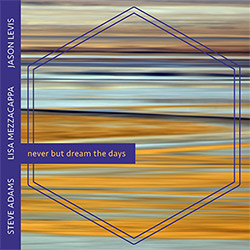
![Hemphill Stringtet, The: Plays the Music of Julius Hemphill [VINYL]](https://www.teuthida.com/productImages/misc4/36409.jpg)

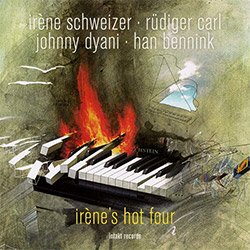

![Halvorson, Mary Septet: Illusionary Sea [2 LPS]](https://www.teuthida.com/productImages/misc4/17952.jpg)

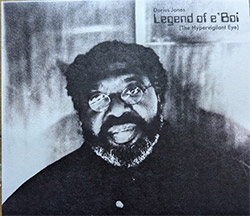




![Money : Money 2 [2 CDs]](https://www.teuthida.com/productImages/misc4/35894.jpg)




![Klinga, Erik: Elusive Shimmer [VINYL]](https://www.teuthida.com/productImages/misc4/36258.jpg)
![CHANGES TO blind (Phil Zampino): Volume 9 - I Wave on a Fine Vile Mist [CD + DOWNLOAD]](https://www.teuthida.com/productImages/misc4/36061.jpg)

![Wallmart / Rubbish: Asset Protection [split CD]](https://www.teuthida.com/productImages/misc4/35900.jpg)


![+Dog+: The Family Music Book Vol. 5 [2 CDs]](https://www.teuthida.com/productImages/misc4/35897.jpg)
![Kuvveti, Deli : Kuslar Soyledi [CASSETTE w/ DOWNLOAD]](https://www.teuthida.com/productImages/misc4/36107.jpg)

![Nakayama, Tetsuya: Edo Wan [CASSETTE w/ DOWNLOAD]](https://www.teuthida.com/productImages/misc4/36105.jpg)
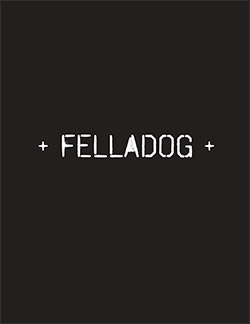
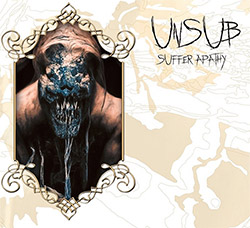


![Yiyuan, Liang / Li Daiguo: Sonic Talismans [VINYL]](https://www.teuthida.com/productImages/misc4/35957.jpg)
![Brown, Dan / Dan Reynolds: Live At The Grange Hall [unauthorized][CASSETTE]](https://www.teuthida.com/productImages/misc4/36245.jpg)








![Palestine, Charlemagne / Seppe Gebruers: Beyondddddd The Notessssss [VINYL]](https://www.teuthida.com/productImages/misc4/36206.jpg)
![Palestine, Charlemagne / Seppe Gebruers: Beyondddddd The Notessssss [NEON GREEN VINYL]](https://www.teuthida.com/productImages/misc4/36207.jpg)

![Laubrock, Ingrid: Purposing The Air [2 CDs]](https://www.teuthida.com/productImages/misc4/35639.jpg)

![Yoko, Ono / The Great Learning Orchestra: Selected Recordings From Grapefruit [2 CDs]](https://www.teuthida.com/productImages/misc4/35841.jpg)









![Zorn, John / JACK Quartet: The Complete String Quartets [2 CDs]](https://www.teuthida.com/productImages/misc4/35609.jpg)

![Lonsdale, Eden: Dawnings [2 CDs]](https://www.teuthida.com/productImages/misc4/35480.jpg)



![Sorry For Laughing (G. Whitlow / M. Bates / Dave-Id / E. Ka-Spel): Rain Flowers [2 CDS]](https://www.teuthida.com/productImages/misc4/35985.jpg)

![Rolando, Tommaso / Andy Moor : Biscotti [CASSETTE w/ DOWNLOADS]](https://www.teuthida.com/productImages/misc4/36106.jpg)


![Electric Bird Noise / Derek Roddy: 8-10-22 [CD EP]](https://www.teuthida.com/productImages/misc4/35970.jpg)








![Elephant9 : Mythical River [VINYL]](https://www.teuthida.com/productImages/misc4/34624.jpg)



![Elephant9 with Terje Rypdal: Catching Fire [VINYL 2 LPs]](https://www.teuthida.com/productImages/misc4/35355.jpg)
![Deerlady (Obomsawin, Mali / Magdalena Abrego): Greatest Hits [VINYL]](https://www.teuthida.com/productImages/misc4/34876.jpg)







![Surplus 1980: Illusion of Consistency [CD]](https://www.teuthida.com/productImages/misc4/35069.jpg)
![Staiano, Moe: Away Towards the Light [VINYL + DOWNLOAD]](https://www.teuthida.com/productImages/misc4/35037.jpg)
![Coley, Byron: Dating Tips for Touring Bands [VINYL]](https://www.teuthida.com/productImages/misc4/17906.jpg)

![Lost Kisses: My Life is Sad & Funny [DVD]](https://www.teuthida.com/productImages/misc4/lostKissesDVD.jpg)